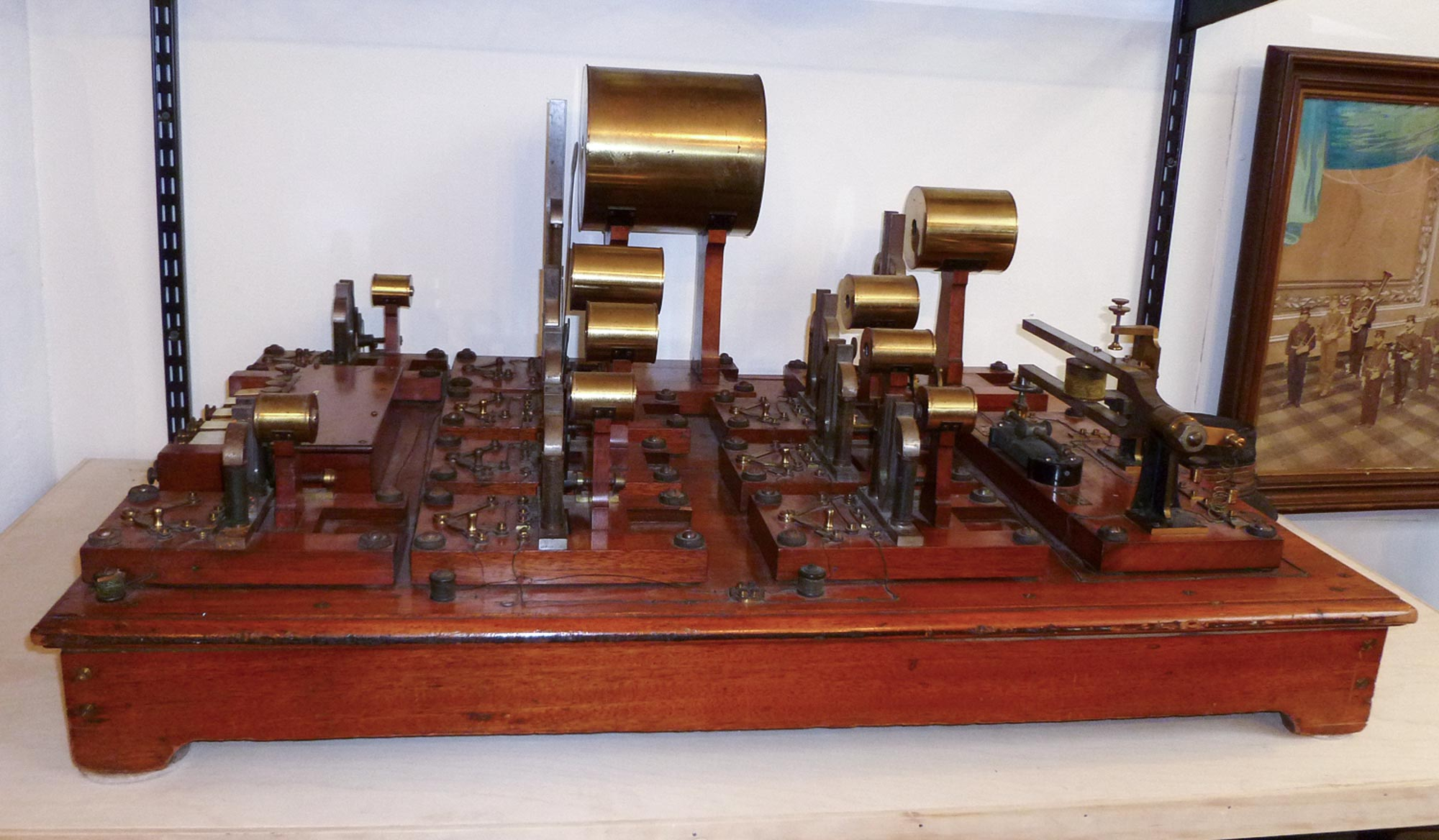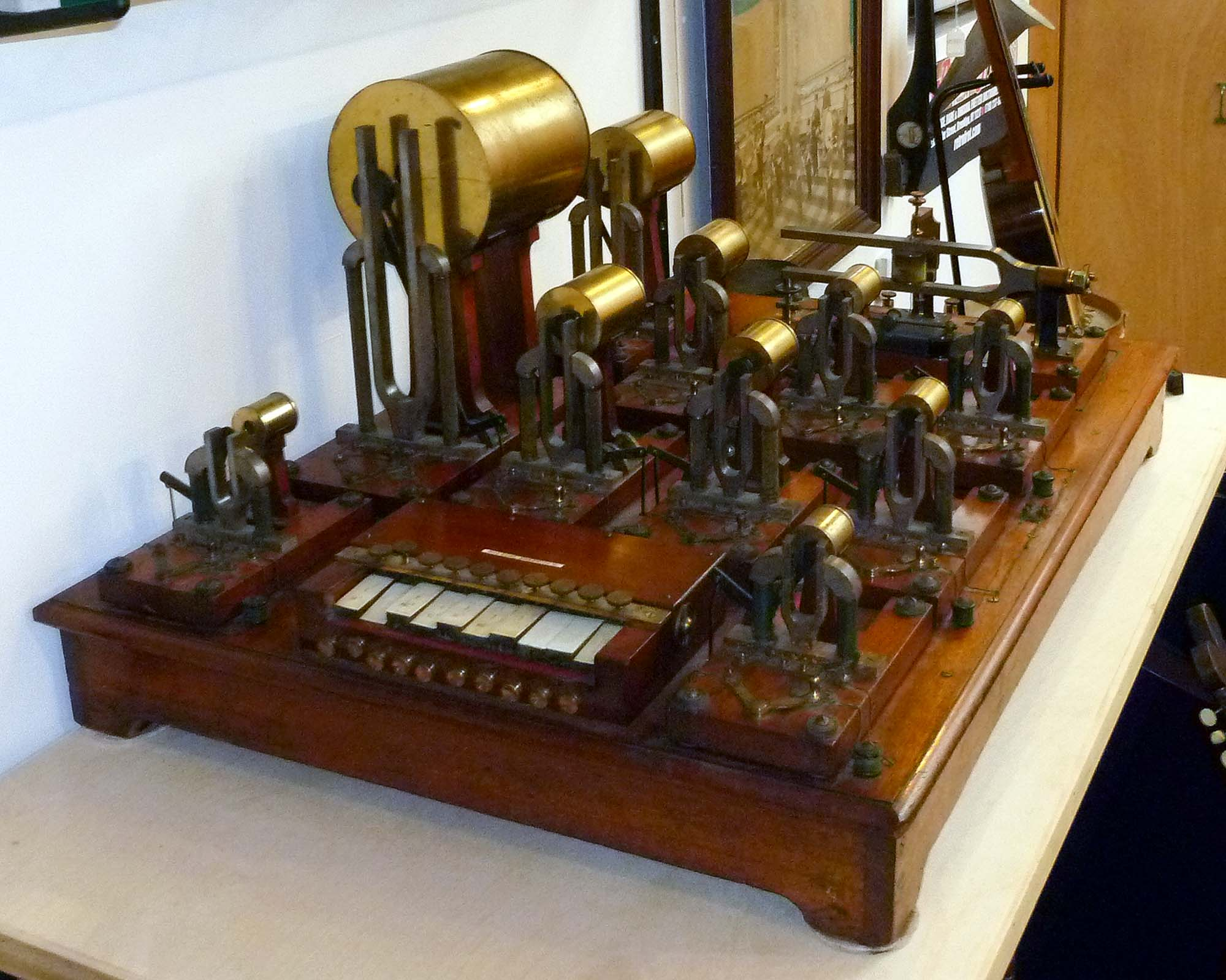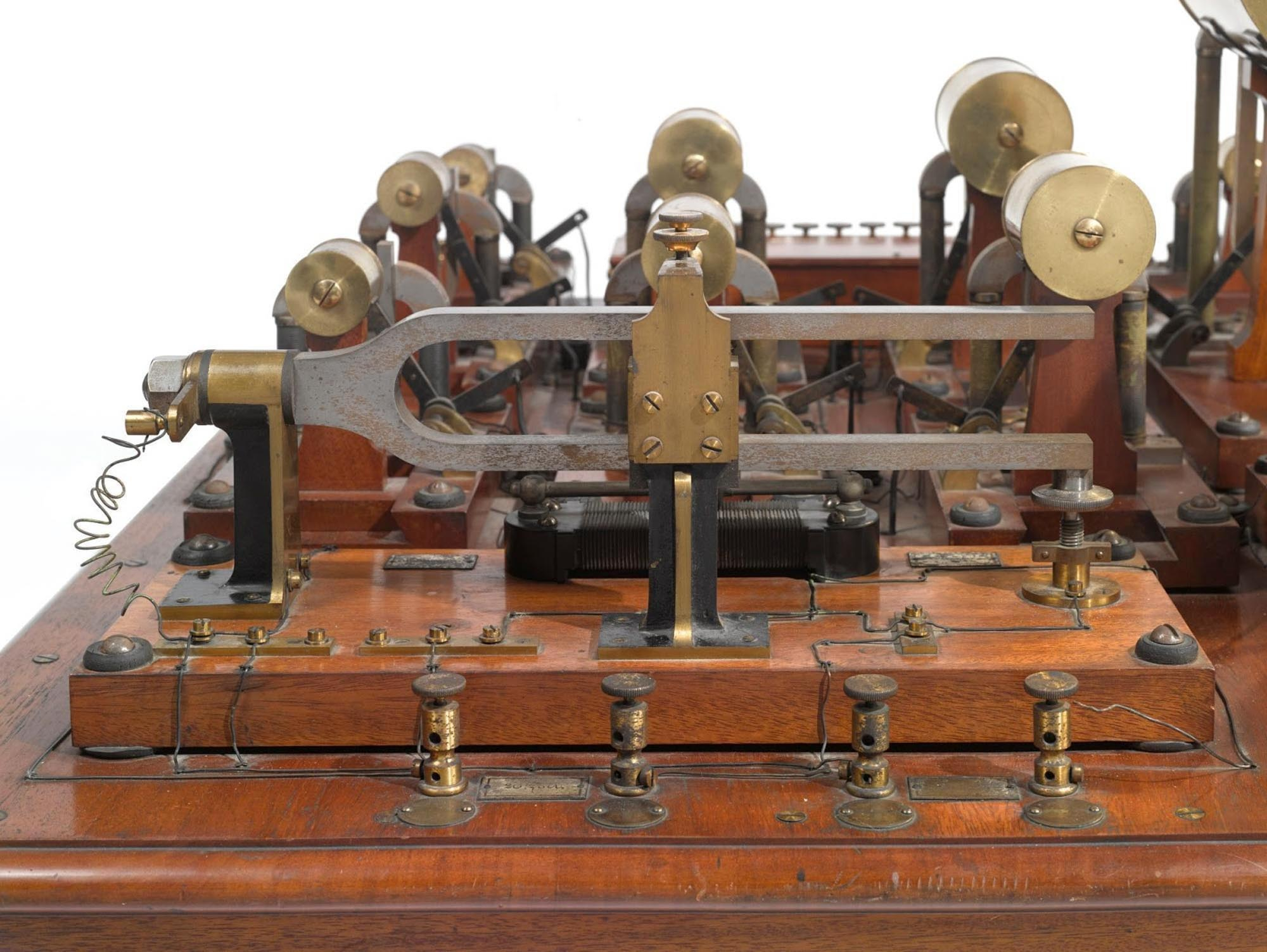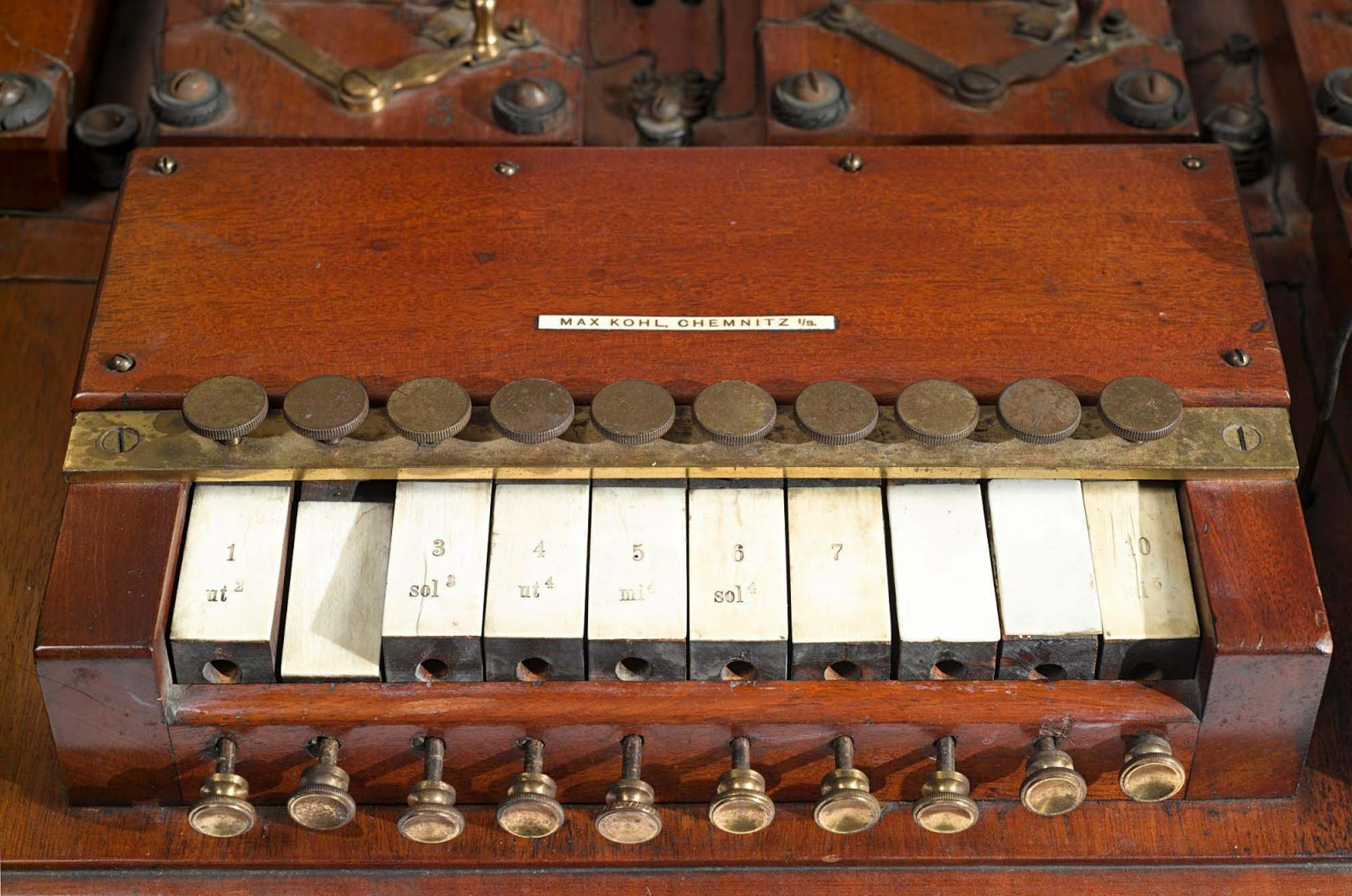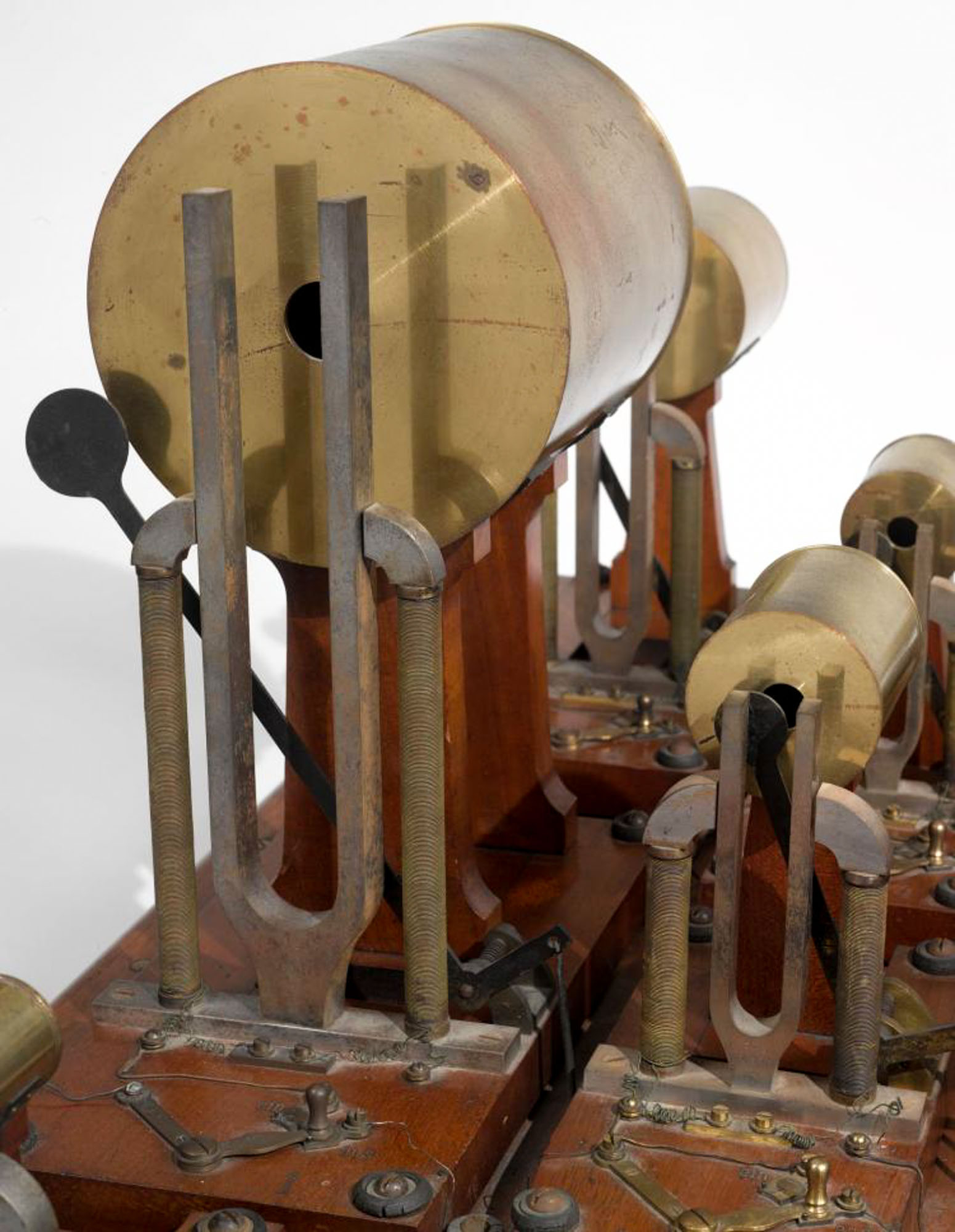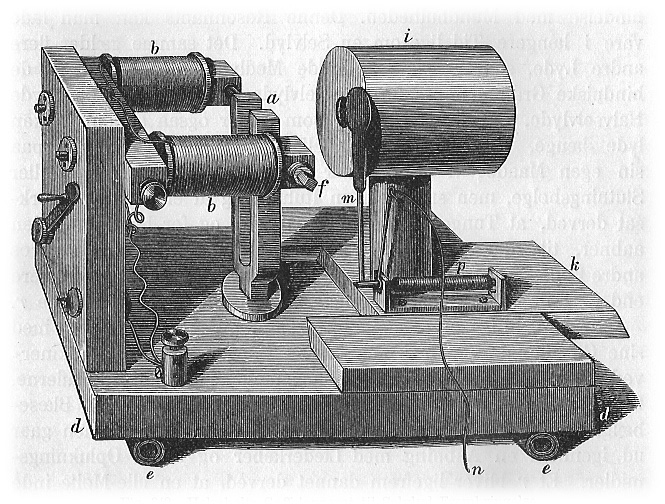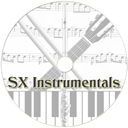Filter on ALL, SYNTH, DRUM, SAMPLER or MISC |
Total list currently 2405 items in 330 Brands |
Max Kohl AG | Helmholtz Sound Synthesiser |
Description | Max Kohl AG founded on 14 March 1876 was a well known company that designed and built scientific mechanical and electrical instruments and was based on Andorfer Str, Chemnitz, Germany. The company created a huge range of equipment sold throughout the world to laboratories and universities including a sound instrument based on a design by the German physicist and psychologist Hermann von Helmholtz. The Max Kohl AG factory in Chemnitz was destroyed by allied bombing during WW2 and most of the remaining equipment was transported intact after the war to the Soviet Union The ‘Sound Synthesiser’ was not intended as a musical instrument but a scientific tool to demonstrate and analyse the effect of overtones in complex sound as described in Helmholtz’s revolutionary book ‘On the Sensations of Tone as a Physiological Basis for the Theory of Music‘ (Hermann von Helmholtz 1870) which had a huge impact on musicologists and instrument designers throughout the twentieth century. Using resonators, Helmholtz demonstrated the components of complex sounds are a combination of overtones of a fundamental note (e.g. a “fundamental” pitch G 440Hz contains a harmonic series of whole number multiples of this 440Hz frequency or overtones – 880Hz G , 1320Hz, 1760Hz, etc. at variable volumes). The Sound Synthesiser used a number of tuning forks – which produced almost pure tones – vibrated by electromagnets which in turn were amplified by a Helmholtz Resonator to generate overtones. The range of overtones could be ‘filtered’ by a mechanical shutter. The instrument helped in the understanding of the nature of speech and vowel sounds; vowel sounds being varied combinations of resonant overtones or ‘formants’ created by the muscles of the vocal tract. Many variations of Helmholtz’s resonators were built; some were brass spheres used with hand-held tuning forks, others used electromagnets to excite the tuning forks. Max Kohl’s 1985 version had ten forks and their corresponding resonators attached to a 39½ x 29 inch mahogany base. The system is driven by an intermittent current provided by a large horizontal master tuning fork and was operated by pressing on the keys on a small ivory keyboard which sent the current to the corresponding electrically driven tuning forks. The keyboard is marked; ut [Do, or C] to 4 octaves, mi [E] to 3 octaves, and sol [G] to 3 octaves. The synthesizer was capable of combining timbres of 10 harmonics to form multiple vowel sounds. |
| Brand | Max Kohl AG |
| Model | Helmholtz Sound Synthesiser |
| Device | Synth |
| Type | Desktop |
| Engine Type | Analog |
| Engine | Acoustic resonators |
| Voices (max) | 10 |
| Engine Detailed | 10 acoustic resonators Sine |
| Filter (VCF) | Mechanical Shutter |
| Keys | 10 |
| Key type | Keys |
| Velocity | N |
| Aftertouch | N |
| Produced: | 1905 - 1905 |
| Legend: | Obvious | Y: Yes, N: No, N/A: Not Applicable | |
| VCO | Voltage Controlled Oscillator | DCO | Digital Controlled Oscillator |
| LFO | Low Frequency Oscillator | Sub | Sub Oscillator |
| VCF | Voltage Controlled Filter | VCA | Voltage Controlled Amplifier |
| Velocity | As with a piano, the harder you hit a key, the louder the sound, unlike most organs which always produce the same loudness no matter how hard you hit a key. | Aftertouch | Pressing a key after you activated it. Channel Aftertouch, no matter which key, it will send a Channel message. Poly Aftertouch, sends the pressure per key instead of the whole channel. |
| Values for OSC, LFO, Filter, Envelope are per voice unless stated otherwise. | |||
